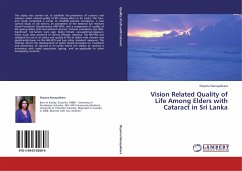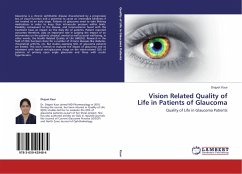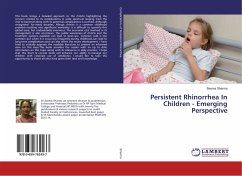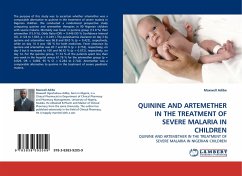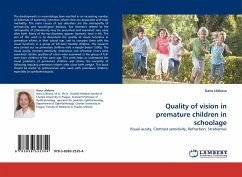
Quality of vision in premature children in schoolage
Visual acuity, Contrast sensitivity, Refraction, Strabismus
Versandkostenfrei!
Versandfertig in 6-10 Tagen
32,99 €
inkl. MwSt.

PAYBACK Punkte
16 °P sammeln!
The developments in neonatology have resulted in an increasing number of deliveries of extremely immature infants that are associated with high morbidity. The main causes of eye disorders are the retinopathy of prematurity and neurological diseases. Eye disorders related to the retinopathy of prematurity may be presumed and examined very early after birth. Many of the eye disorders appear, however, later in life. The aim of this work is to document the quality of visual functions in premature infants in their school age, and to compare them with the visual functions in a group of full-term hea...
The developments in neonatology have resulted in an increasing number of deliveries of extremely immature infants that are associated with high morbidity. The main causes of eye disorders are the retinopathy of prematurity and neurological diseases. Eye disorders related to the retinopathy of prematurity may be presumed and examined very early after birth. Many of the eye disorders appear, however, later in life. The aim of this work is to document the quality of visual functions in premature infants in their school age, and to compare them with the visual functions in a group of full-term healthy children. The research was carried out on premature children with a weight below 1500g. The visual acuity, contrast sensitivity, strabismus and refraction errors were examined. Similar qualities of vision were examined in the group of full-term born children of the same age. This work helps to understand the visual problems of premature children and shows the necessity of following regularly premature infants with a low birth weight. This book should be useful to professionals who work with premature children, especially to ophthalmologists.



